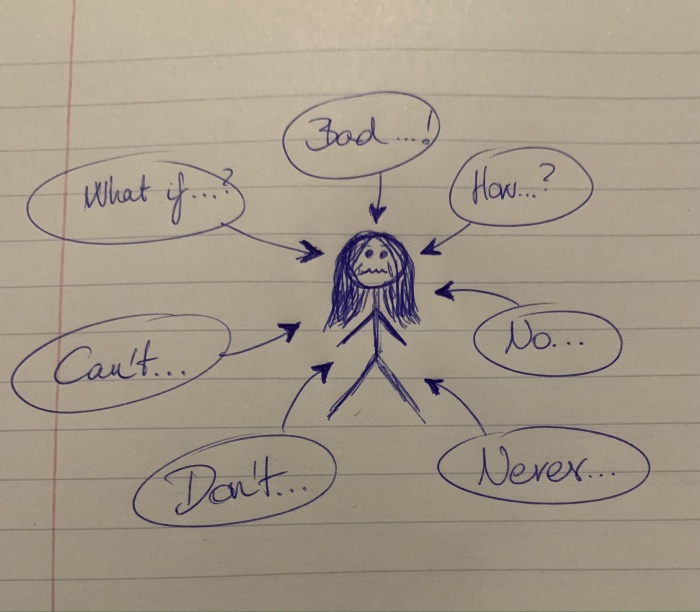In today’s world we are taught to treat the condition “anxiety” as a potential mental disorder, but this does not mean it has always been that way in history. Before further discussing where the illness came from or when it was first recognized, we must understand what it really is today.
What is Anxiety?

Anxiety has existed ever since the need of survival, the kind of anxiety that is beneficial to us evolutionarily. This kind of anxiety has a role in the whole fight or flight system and keeps us alive, but that is very different from the anxiety we recognize today. When we talk about anxiety disorders we mean that the general nervousness, fear, and stress are at the extremes in everyday life and interferes with a person’s life. As to what causes anxiety, there is a few ideas out there, such as:
- imbalance in brain signaling in areas of the amygdala and hippocampus
- excess glutamate (resulting in the overstimulation of neurons)
- lack of adequate GABA (resulting in the inhibition of neurons)
Where anxiety came from and where it is now?
Ancient Greece: the very first documented signs of having anxiety described. With the then popular “hysteria” came the description of negative anxiety symptoms.
Early Renaissance: or the witch era. Women who were simply anxious, or again, “hysteric” were often accused of being witches.
Victorians: the trend here took a tiny bit of a different rout, instead of calling them witches they were now considered crazy. It used to be common for family members to take those who had panic attacks and get them treated at an insane asylum. Treatments included electroshock therapy, and other cruel torture rather than the therapies we see today.
The American Civil War: or the time of “soldiers on drugs”. Soldiers who returned from the war were thought to have “irritable heart syndrome”, which is the term used for the condition we now call PTSD.
The 18th Century: “irritable heart syndrome” was now the new “nerve weakness”, which doctors decided to treat with alcohol and bromide salts. It is also important that this was a turning point in anxiety reaching other than women, it was now men that were being targeted for this illness.
The 20th Century: Although it is unclear, but some documents support the idea that Russia was amongst the first to recognize anxiety as being psychological, rather than simply physical. Psychiatrists working with war veterans now began to use barbiturates, not to cure, but only to treat symptoms and sedate these men. Therapies started spreading as a form of treatment option available, but was still rather brutal than helpful.
Late 20th Century: from around the 1950’s, modern medicine began to develop, and options such as electroshock therapy were mostly eliminated and left only for extreme cases. Fear exposure therapy was one that arose from this time, as well as the start of antidepressant use for not only depression, but anxiety. It was not until the 1980’s that the term “anxiety disorder” was created, leading to its official recognition by the American Psychiatric Association. From this time on, researching this disorder became much easier.
As for Today: The DSM-5 (2013) recognized anxiety and describes it as “Excessive anxiety and worry (apprehensive expectation) about a number of events or activities. Difficult to control the worry.”
Sources:
https://www.ncbi.nlm.nih.gov/pmc/articles/PMC5573555/